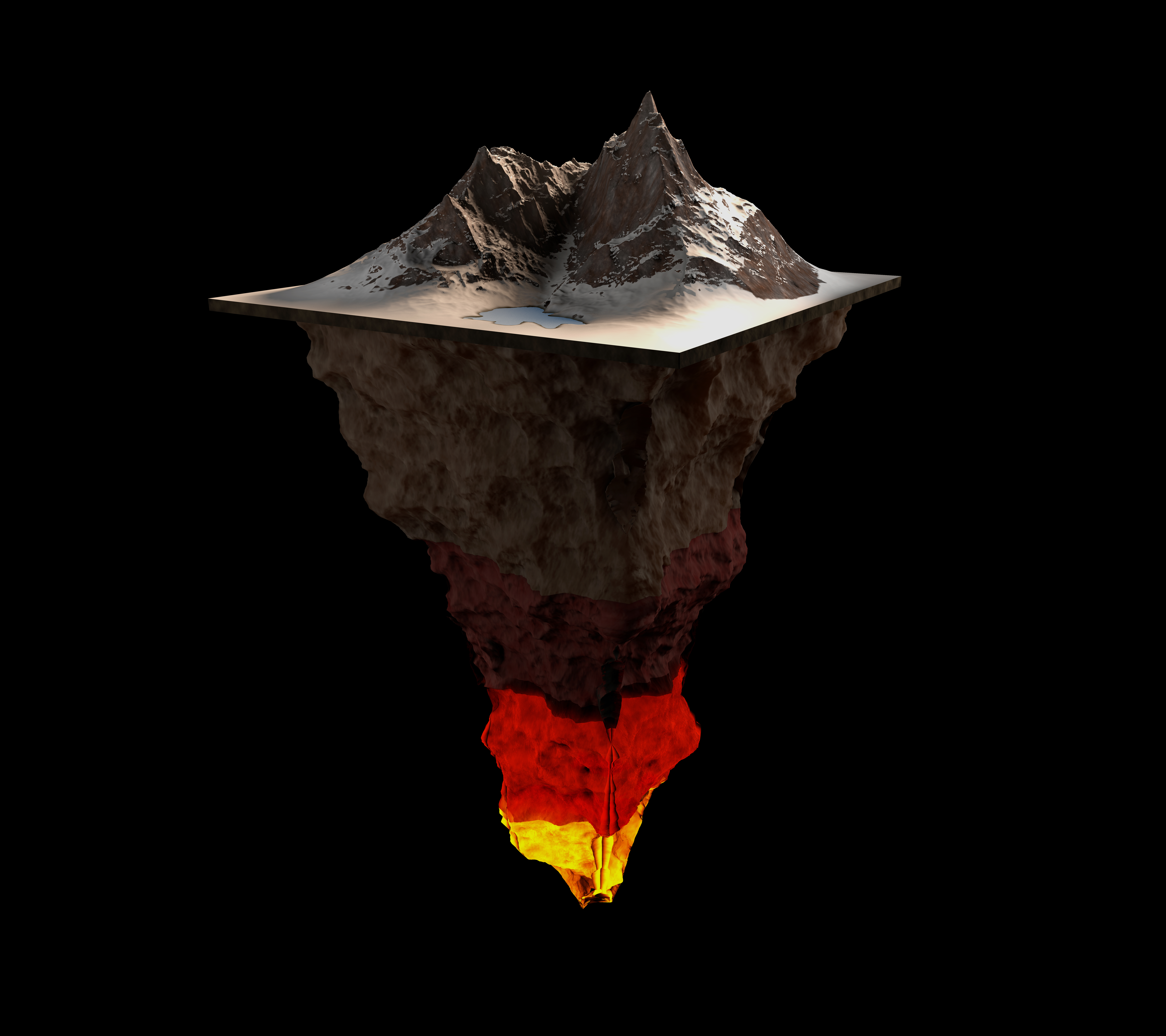Mountain Range More Rugged Than the Rockies Found Buried Deep Within Earth

Earth is hiding some of its most impressive mountain ranges deep within its mantle.
Our planet consists of three basic layers — its crust, on top of which 7.7 billion people and nearly 9 million other species live; its mantle, which is mostly solid rock, makes up 84 percent of our planet's volume, and drives volcanoes and earthquakes; and the core, which feeds a steady magnetic field around our globe. [Photos: The World's Weirdest Geological Formations]
But in between these distinct layers, there's even more-detailed anatomy. Dividing the mantle into upper and lower layers is the transition zone, with its deepest part being the so-called 660-kilometer (410 miles) boundary. And now, geologists have found that this boundary hides many mountains, researchers reported in a new study published Feb. 14 in the journal Science.
These mountains are more rugged, with large differences in elevation, than the ranges we're familiar with on the surface, such as the Rockies and Appalachians, according to a Princeton University statement.
In order for the scientists to discover these mountains, buried some 410 miles below the surface, our planet needed to shake — a lot.
In an international collaboration between Princeton University and the Institute of Geodesy and Geophysics in China, scientists analyzed data from a magnitude-8.2 earthquake that shook Bolivia in 1994.
Strong earthquakes can send shock waves through the interior of the planet, sometimes through the core, all the way to the other side and back again, according to the statement. Seismologists can monitor the intensity of the waves at different points on the surface as these shocks bounce back and forth. [How Long Would It Take to Fall Through the Earth?]
Get the world’s most fascinating discoveries delivered straight to your inbox.
Seismic waves change depending on what they hit; while they travel straight through smooth rocks, the waves scatter when they hit boundaries or any kind of roughness. Seismologists on the surface can detect how much the waves scatter and use that data to figure out what's below the surface.
Doing just that in the new study, the researchers created a simulation of what the top of the transition zone and the bottom (the 660-km boundary) in the mantle looked like. While they found that the boundary contained roughness, it's unclear whether the mountains are taller than those we're familiar with on the surface of the planet.
Similar to what's found on Earth's surface, the topography at that boundary varied quite a bit, the researchers found. Furthermore, at the very top of this zone, at around 410 kilometers down (255 miles) they found very little roughness.
Discovering why this boundary layer looks the way it does could help scientists understand how the planet formed and how it now functions, the statement said. It's unclear whether the upper and lower mantle are mixed or remain independent of each other, each with its own chemical makeup. For years, geologists have debated whether this transition zone keeps the upper and lower mantles from mixing.
But the newly found topography itself could yield insight into whether the two intermingle. The smoother areas of the boundary could have resulted from mixing of the two layers, while the rougher areas could have arisen because they couldn't mix very well in those spots, creating deposits, the researchers said.
The deposits themselves could be from rocks that migrated long ago from the crust into the mantle, now resting near the 660-km boundary, possibly right below or right above it, the statement said.
"It's easy to assume, given we can only detect seismic waves traveling through the Earth in its current state, that seismologists can't help [discern] how Earth's interior has changed over the past 4.5 billion years," study co-author Jessica Irving, a geophysicist at Princeton, said in the statement. "What's exciting about these results is that they give us new information to understand the fate of ancient tectonic plates which have descended into the mantle, and where ancient mantle material might still reside."
- In Images: Volcanic Monoliths of the American West
- Shine On: Photos of Dazzling Mineral Specimens
- Granite: Bedrock of the Earth
Originally published on Live Science.

Yasemin is a staff writer at Live Science, covering health, neuroscience and biology. Her work has appeared in Scientific American, Science and the San Jose Mercury News. She has a bachelor's degree in biomedical engineering from the University of Connecticut and a graduate certificate in science communication from the University of California, Santa Cruz.
 Live Science Plus
Live Science Plus






